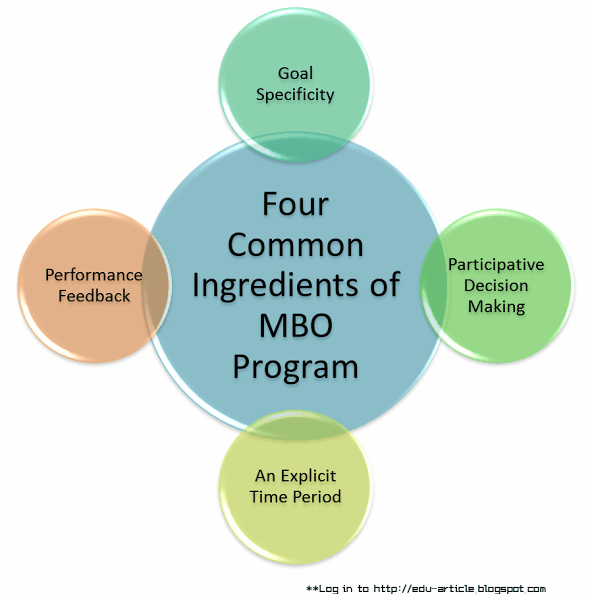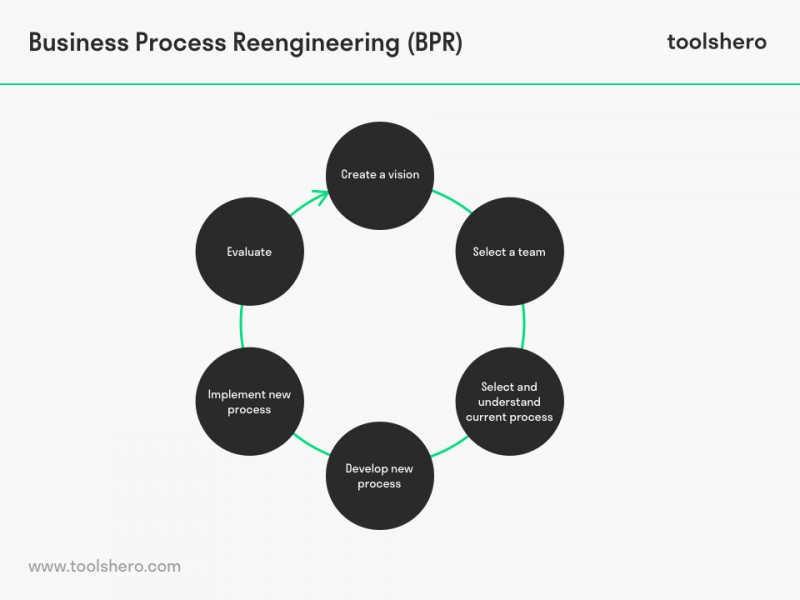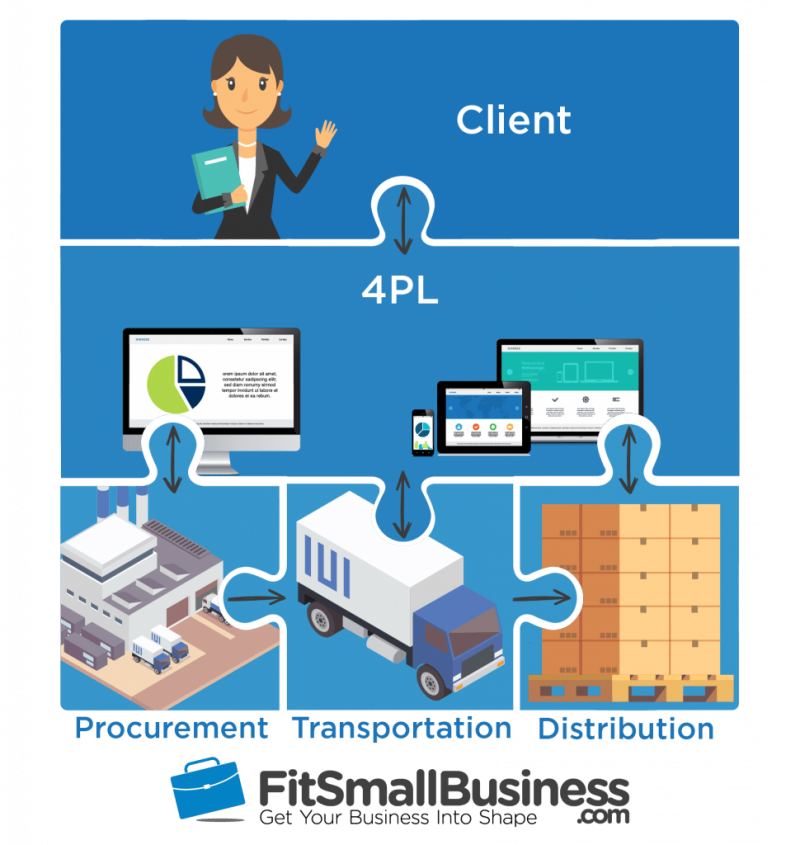What is management by objectives (mbo)? defined and explained
Содержание:
- Management Buyout (MBO) vs. Management Buy-In (MBI)
- Близорукое мышление:
- Understanding Management by Objectives (MBO)
- Эффективность программ МВО
- Common Elements of a Management by Objectives Program
- Benefits of Management by Objectives
- Термины
- What Is Management by Objectives (MBO)?
- What is MBO (Management by Objectives)?
- It’s Your Turn
- How a Management Buyout (MBO) Works
- Advantages and Disadvantages of a Management Buyout (MBO)
- Advantages and Disadvantages of Management by Objectives (MBO)
- Limitations of MBO
- MBO best practices
- Features of Management by Objectives
- Weaknesses of Management by Objectives
- Принципы управления по KPI целей
- Игры с числовыми показателями:
Management Buyout (MBO) vs. Management Buy-In (MBI)
A management buyout (MBO) is different from a management buy-in (MBI), in which an external management team acquires a company and replaces the existing management team. It also differs from a leveraged management buyout (LMBO), where the buyers use the company assets as collateral to obtain debt financing. The advantage of an MBO over an LMBO is that the company’s debt load may be lower, giving it more financial flexibility.
An MBO’s advantage over an MBI is that as the existing managers are acquiring the business, they have a much better understanding of it and there is no learning curve involved, which would be the case if it were being run by a new set of managers. Management buyouts (MBOs) are conducted by management teams that want to get the financial reward for the future development of the company more directly than they would do only as employees.
Близорукое мышление:
В системе, управляемой на основе числовых норм и заданий, вознаграждается усилие тех, кто дает видимые сейчас и измеряемые результаты. То, что находится сейчас в поле зрения и что можно численно оценить, получить наибольший приоритет, даже если само спасение компании зависит от деятельности, которую не оценить количественно, но которая важна с точки зрения перспектив достижения долговременных целей.
Высшее руководство дает задания руководителям среднего звена, а те возлагают соответствующие задания на своих работников. Работники борются за выполнение этих заданий, вынужденные игнорировать, возникающие при этом дефекты, а также то, где и когда они скажутся. Всем приходится бороться с проблемами, которые были порождены недостатками работы других отделов и служб компании. Цикл замыкается. Работники слишком заняты выполнением плана, чтобы успеть подумать, что они отправляют потребителям.
В этом климате удовлетворения сегодняшних числовых заданий и норм, создается и определенная рабочая культура, мораль, ощущение того, что важно, а что не важно. Но этот подход разрушает усилия по производству качественной продукции и понизит также и нравственные качества работников
Но этот подход разрушает усилия по производству качественной продукции и понизит также и нравственные качества работников.
Understanding Management by Objectives (MBO)
Management by objectives (MBO) is the establishment of a management information system to compare actual performance and achievements to the defined objectives. Practitioners claim that the major benefits of MBO are that it improves employee motivation and commitment and allows for better communication between management and employees.
However, a cited weakness of MBO is that it unduly emphasizes the setting of goals to attain objectives, rather than working on a systematic plan to do so. Critics of MBO, such as W. Edwards Demming, argue that setting particular goals like production targets leads workers to meet those targets by any means necessary, including short-cuts that result in poor quality.
In his book that coined the term, Peter Drucker set forth several principles for management by objectives. Objectives are laid out with the help of employees and are meant to be challenging but achievable. Employees receive daily feedback, and the focus is on rewards rather than punishment. Personal growth and development are emphasized, rather than negativity for failing to reach objectives.
Drucker believed MBO was not a cure-all but a tool to be utilized. It gives organizations a process, with many practitioners claiming that the success of MBO is dependent on the support from top management, clearly outlined objectives, and trained managers who can implement it.
Эффективность программ МВО
Управление по целям имеет множество сторонников, и известны многие примеры положительных результатов применения данного метода. Общая правильность метода МВО обосновывается исследованиями в области установления целей и обратной связи.
ПРАКТИЧЕСКАЯ ОБОСНОВАННОСТЬ МВО. Имеется значительный объем исследований, которые показывают, что производительность людей, имеющих конкретные цели, выше производительности тех, кому цели не установлены или кого просто просят стараться. Постановка конкретных целей повышает производительность потому, что индивид обладает четкими ожиданиями относительно результата. Согласно теории вероятности, если люди четко представляют, каких результатов от них ожидают, и если они ощущают сильное правдоподобие (сильную вероятность) того, что, прилагая определенные усилия, они смогут достичь данного уровня производительности и получить соответствующее вознаграждение, то их мотивация выполнения задания возрастет.
Имеется также множество исследований, показывающих, что предоставление людям информации о результатах их работы повышает их производительность. У страховых агентов, которые получали периодические бюллетени о производительности и информационные листки о достигнутых результатах работы, улучшились показатели работы. У тех, кто не получал такой информации, показатели работы ухудшились. Исследование на «Дженерал Электрик» показало, что увеличение объема информации, поступающей от мастеров к рабочим, приводит к повышению производительности рабочих. Данное исследование показало также, что такая информация будет наиболее эффективной, если она конкретна, прямо относится к делу и своевременна.
ПОЧЕМУ ПРОГРАММЫ МВО ТЕРПЯТ НЕУДАЧУ. Несмотря на поддержку, у метода МВО много критиков, и имеется много случаев, когда программы МВО потерпели неудачу
Одна из причин неудач — слишком большое внимание к участию работников в постановке своих целей. Исследования показали, что привлечение к участию в постановке целей усиливает мотивацию некоторых индивидов и повышает их производительность
Однако другие исследования указывают на то, что в некоторых ситуациях такое участие не всегда уместно и не всегда реально ведет к повышению производительности.
Все же, более общая и более существенная проблема состоит в том, что руководству часто не удается использовать все аспекты МВО. Например, оно не может видоизменить систему оплаты и премирования труда, чтобы достижение целей вознаграждалось надлежащим образом. В табл. 17. дана сводка наиболее распространенных причин, почему потерпели неудачу программы управления по целям.
Таблица 17. Причины неудачи программ МВО
|
1.Отсутствие заинтересованности и поддержки высшего руководства. Для успеха программам МВО необходима полная поддержка высшего руководства. |
|
2. Искажение концепции. Программам МВО обычно оказывают сопротивление, если они используются в качестве «кнута» для усиления контроля над подчиненными. |
|
3. Трудности при постановке целей. Некоторые виды работ и областей деятельности трудно объективно оценить и количественно определить. |
|
4. Увеличение канцелярской работы. Руководители могут оказывать сопротивление реализации программы, потому что это увеличивает объем их канцелярской работы. |
|
5. Ужесточение дефицита времени. Чтобы использовать программу МВО, руководитель должен учиться устанавливать приоритеты и эффективно использовать время. |
|
6. Отсутствие соответствующей квалификации. У руководителей может отсутствовать необходимая квалификация для определения целей, планирования, обмена информацией и межличных взаимодействий, таких как обучение, консультация, а также передача и получение информации на основе обратной связи. |
|
7. Отсутствие индивидуальной мотивации. Вознаграждения в явной и скрытой форме (например, премия и моральное удовлетворение) должны быть достаточными для стимулирования людей к работе. |
|
8. Слабая интеграция с другими системами. Этапы постановки целей и проверки результатов должны сочетаться с другими мерами, например, прогнозированием, составлением бюджета и иными процессами. |
|
9. Стратегии неуместных изменений. Проектирование и реализация программы МВО должны быть тщательно спланированы. Должно быть внимательно рассмотрено какими путями система будет спроектирована и внедрена и кто будет в ней участвовать. |
назад | к содержанию | вперед >
Common Elements of a Management by Objectives Program
The essence of MBO is participative goal setting, choosing a course of actions and decision-making process. An important part of the MBO is the measurement and comparison of the employee’s actual performance with the standards set.
Management by Objective defined as a management system in which specific performance goals are jointly determined by employees and their managers, progress toward accomplishing those goals is periodically reviewed and rewards are allocated on the basis of this progress.
4 Common Ingredients of an MBO Program are;
- Goal specificity,
- Participative decision making,
- An explicit time period, and
- Performance feedback.
Let’s briefly look at each of these.

1. Goal Specificity
The objectives in MBO should be concise statements of expected accomplishments. It is not adequate, for example merely to slate a desire to cut costs, improve service or increase quality.
Such desires need to be converted into tangible objectives that can be measured and evaluated for instance to cut departmental costs by 8 percent to improve service by ensuring that all insurance claims processed within 72 hours of receipt, or to increase quality by keeping returns to less than 0.05 percent of sales.
2. Participative Decision Making
In MBO, the objectives are not unilaterally set by the boss and assigned to employees, as is characteristic of traditional objective setting.
Rather, MBO replaces these imposed goals with participative determined goals. The manager and employee jointly choose the goals and agree on how they will be achieved.
3. An Explicit Time Period
Each objective also has a concise time period in which it is to be completed. Typically the time period is three months, six months, or a year.
4. Performance Feedback
The final ingredients in an MBO program are continuous feedback on performance and goals that allow individuals to monitor and correct their own actions.
This continuous feedback is supplemented by periodic formal appraisal meetings in which superiors and subordinates can review progress toward goals, which lead to further feedback.
Benefits of Management by Objectives
In addition to the fact that goal-orientation of management promotes a sense of motivation among the people within the organization, MBO has certain other benefits which are narrated as under:
Objectives cannot be established without planning, and results-oriented planning is the only kind that makes sense. MBO forces managers to think about planning for results, rather than merely planning work or activities.
In order to make objectives realistic, Management by Objectives also requires that managers think of the way they will accomplish results and the resources and assistance they will require.
MBO encourages employees to commit themselves to their goals because they have before them clearly defined objectives.
Moreover, the fact that they often participate in goal- setting, improves their commitment to work. As a matter of fact, people become enthusiastic when they control their own fate.
MBO forces management to clarify organizational roles and structures. So far as possible, organizational positions are built around the key results expected of the people occupying them.
Moreover, the companies that embark on MBO programs can easily discover deficiencies in their organization and take the necessary steps to rectify.
It serves as a device for organizational control integration. MBO helps in making a more systematic evaluation of performance.
There is no better incentive for self- control and no better way to know the standards for control than having a set of clear goals.
When each and every employee knows what to achieve, control becomes very easy and automatic.
Management by Objectives helps in improving productivity as the management team concentrates on the important task of reducing costs.
It stimulates the subordinates’ motivation.
It provides a greater opportunity to managers for personal satisfaction on account of participation in objective setting and rational performance appraisal.
It helps in locating weak and problem areas because of improved communication and organization structure.
Термины
| Сокр. | Полное название | Род войск |
|---|---|---|
| АДД | авиация дальнего действия | авиация |
| авц. | авиации (при воинском звании) | авиация |
| арм. | армейский (ая) | общее |
| арт. | артиллерийский (ая), артиллерии (при воинском звании) | артиллерия |
| БИУС | боевая информационно-управляющая система | общее |
| БМ | большой мощности | общее |
| БМД | боевая машина десантная | танковые |
| БМП | боевая машина пехоты | танковые |
| БО | береговая оборона | флот |
| БПЛА | беспилотный летательный аппарат | авиация |
| БРДМ | бронированная разведывательно-дозорная машина | танковые |
| БРМ | боевая разведывательная машина | танковые |
| БРЭМ | бронированная ремонтно-эвакуационная машина | танковые |
| б/с | береговой службы (при воинском звании) | флот |
| БТВТ | бронетанковое вооружение и техника | танковые |
| БТВ | бронетанковое вооружение | танковые |
| БТР | бронетранспортёр | танковые |
| БТТ | бронетанковая техника | танковые |
| ВМБ | военно-морская база | флот |
| внутр. | внутренние | общее |
| ВПП | взлётно-посадочная полоса | авиация |
| ВС | воздушное судно | авиация |
| вт | военно-транспортный | авиация |
| гв. / Г | гвардейский (ая) | общее |
| дд / ДД | дальнего действия | общее |
| ДРЛО | дальнее радиолокационное обнаружение | авиация |
| жд | железнодорожный (ая) | инженерные |
| и/в | инженерных войск (при воинском звании) | инженерные |
| инжз | инженерные заграждения | инженерные |
| КВ | космические войска | космос |
| ЛА | летательный аппарат | авиация |
| мин. | миномётный (ая) | артиллерия |
| мор. | морской (ая) | флот |
| НУРС | неуправляемый реактивный снаряд | общее |
| ОМ | особой мощности | общее |
| ОСНАЗ | особого назначения | общее |
| отд. | отдельный (ая) | общее |
| ПВО | противовоздушная оборона | ПВО |
| ПЗРК | переносной зенитно-ракетный комплекс | общее |
| погран. | пограничный | общее |
| ПКР | противокорабельная ракета | общее |
| ПТАБ | противотанковая авиационная бомба | авиация |
| ПТУР | противотанковая управляемая ракета | общее |
| ПТУРС | противотанковый управляемый реактивный снаряд | общее |
| раб | район авиационного базирования | авиация |
| развед. | разведывательный | общее |
| РС | реактивный снаряд | общее |
| РСЗО | реактивная система залпового огня | артиллерия |
| сан. | санитарный (ая) | медицина |
| САУ | самоходная артиллерийская установка | танковые |
| св. | сводный | общее |
| СпН | специального назначения | общее |
| т/в | танковых войск (при воинском звании) | танковые |
| тех/в | технических войск (при воинском звании) | инженерные |
| тяж. | тяжёлый (ая) | общее |
| укреп. | укреплённый | общее |
What Is Management by Objectives (MBO)?
Management by objectives (MBO) is a strategic management model that aims to improve the performance of an organization by clearly defining objectives that are agreed to by both management and employees. According to the theory, having a say in goal setting and action plans encourages participation and commitment among employees, as well as aligning objectives across the organization.
The term was first outlined by management guru Peter Drucker in his 1954 book, The Practice of Management.
1:17
Management by Objectives
- Management by objectives (MBO) is a strategic management model that aims to improve organizational performance by clearly defining objectives that are agreed to by both management and employees.
- According to the theory, having a say in goal setting and action plans encourages participation and commitment among employees, as well as aligning objectives across the organization.
- The strategy was formulated by Peter Drucker in the 1950s, detailing five steps that organizations should follow.
- Critics of MBO argue that it leads to employees trying to achieve the set goals by any means necessary, often at the cost of the company.
What is MBO (Management by Objectives)?
MBO is the process of defining top company goals and using them to determine employees’ objectives. This helps all company contributors see their accomplishments in connection to the company’s top priorities as they carry out their tasks, reinforcing alignment between activity and outcome, which dramatically increases productivity. MBO processes are intended to identify an employee’s main objectives, later graded with group input.
Though MBO is intended to help define and manage a set of objectives, the objectives themselves will be at least a little bit different for every company. It allows companies to express their individuality as well as their top priorities and, most important, to execute on them.
It’s Your Turn
What do you think? Do you recognize the practical explanation about Management By Objectives or do you have more suggestions? What are your success factors for the organizational goal setting and achieving business success?
Share your experience and knowledge in the comments box below.
If you liked this article, then please subscribe to our Free Newsletter for the latest posts on models and methods. You can also find us on , LinkedIn, and YouTube.More information
- Drucker, P. F. (2007). Management challenges for the 21st century. Routledge.
- Drucker, P. F. (1995). People and performance: The best of Peter Drucker on management. Routledge.
- Rodgers, R., & Hunter, J. E. (1991). Impact of management by objectives on organizational productivity. Journal of Applied Psychology, 76(2), 322.
How to cite this article:
Mulder, P. (2010). Management By Objectives (MBO). Retrieved from ToolsHero: https://www.toolshero.com/management/management-by-objectives-drucker/
Add a link to this page on your website:
<a href=”https://www.toolshero.com/management/management-by-objectives-drucker/”>ToolsHero.com: Management By Objectives (MBO)</a>
How a Management Buyout (MBO) Works
Management buyouts (MBOs) are favored exit strategies for large corporations that wish to pursue the sale of divisions that are not part of their core business, or by private businesses where the owners wish to retire. The financing required for an MBO is often quite substantial and is usually a combination of debt and equity that is derived from the buyers, financiers, and sometimes the seller.
While management gets to reap the rewards of ownership following an MBO, they have to make the transition from being employees to owners, which comes with significantly more responsibility and a greater potential for loss.
One prime example of a management buyout is when Michael Dell, the founder of Dell, the computer company, paid $25 billion in 2013 as part of a management buyout (MBO) of the company he originally founded, taking it private, so he could exert more control over the direction of the company.
Advantages and Disadvantages of a Management Buyout (MBO)
Management buyouts (MBOs) are viewed as good investment opportunities by hedge funds and large financiers, who usually encourage the company to go private so that it can streamline operations and improve profitability away from the public eye, and then go public at a much higher valuation down the road.
In the case the management buyout (MBO) is supported by a private equity fund, the fund will, given that there is a dedicated management team in place, likely pay an attractive price for the asset. While private equity funds may also participate in MBOs, their preference may be for MBIs, where the companies are run by managers they know rather than the incumbent management team.
However, there are several drawbacks to the MBO structure as well. While the management team can reap the rewards of ownership, they have to make the transition from being employees to owners, which requires a change in mindset from managerial to entrepreneurial. Not all managers may be successful in making this transition.
Also, the seller may not realize the best price for the asset sale in an MBO. If the existing management team is a serious bidder for the assets or operations being divested, the managers have a potential conflict of interest. That is, they could downplay or deliberately sabotage the future prospects of the assets that are for sale to buy them at a relatively low price.
Advantages and Disadvantages of Management by Objectives (MBO)
MBO comes with many advantages and disadvantages to a company’s success. The benefits include employees taking pride in their work with goals that they know they can achieve. It also aligns employees with their strengths, skills, and educational experiences. MBO also leads to increased communication between management and employees. Assigning tailored goals brings a sense of importance to employees, bringing loyalty to the firm. And lastly, management can create goals that lead to the success of the company.
Though there are plenty of benefits to MBO, there are some drawbacks and limitations. As MBO is focused on goals and targets, it often ignores other parts of a company, such as the culture of conduct, a healthy work ethos, and areas for involvement and contribution. MBO puts increased strain on employees to meet the goals in a specified time frame. In addition, if management solely relies on MBO for all management responsibilities, it can be problematic for areas that don’t fit under MBO.
Limitations of MBO
Although MBO is generally taken as the panacea for all the problems of an organization, it is not without weaknesses or limitations. The following are the limitations of Management by Objectives;
- MBO cannot be implemented effectively on account of the difficulty in setting verifiable objectives.
- The open atmosphere for appropriate objective-setting is absent because of differences in the status of subordinates.
- Managers may not get time to do even their normal work as MBO involves much paperwork and holding many meetings.
- There is a tendency on the part of the managers to emphasize short-term objectives and to become more precise in objective setting and accomplishment.
- MBO is a philosophy of managing an organization in a new way. However, many managers fail to understand and appreciate this new approach.
- MBO represents the danger of inflexibility in the organization, particularly when the objectives need to be altered. In a dynamic environment, a particular objective may not be valid forever.
The essence of MBO is participative goal setting, choosing the course of actions and decision making. An important part of the MBO is the measurement and the comparison of the employee’s actual performance with the standards set.
The MBO should be defined that Management By Objectives is a management system in which specific performance goals are jointly determined by employees and their managers, progress toward accomplishing those goals is periodically reviewed and rewards are allocated on the basis of this progress.
MBO best practices
Goals
Goals are set for sole contributors, team leaders, department executives, and the CEO, so everyone has a sense of what they are supposed to be contributing to the team as well as how it fits into the big picture.
Objectives
Objectives are essential to ensuring that all contributors spend their time at work productively and are working towards a concerted outcome. They also teach those at a company about how much they are truly capable of accomplishing in a set amount of time. If quarterly goals end up being too easy, they can be adjusted to be more ambitious or vice versa during the review process. It is important to set goals that are aspirational, so employees are met with a real challenge.
We recommend from one to three objectives, maximum. This forces employees to discover what their essential priorities should be. As Peter Drucker noted, “Do first things first, and second things not at all.” Overall, the MBO process consists of five steps:
-
Set company objectives
-
Cascade objectives to employees
-
Monitor
-
Evaluate performance
-
Reward performance
Quantify
Another rule is to quantify your objectives to provide a clear idea of success, which will be important later in the review process. Rules like this are helpful guidelines but do not necessarily need to be applied at all times. Top company goals are sometimes non-quantifiable. Company culture, for instance, is a valuable asset and one that deserves to be a high priority, though difficult to quantify.
If you’re interested in MBOs, you may also be interested in OKRs (objectives and key results), a similar objective setting and tracking management process.
Performance reviews
The performance review process helps identify mistakes and errors. It also allows for a brainstorming session about what the company might need to change to meet its main objectives in the future.
Blog: Team Goal Setting: How to Reach the Extraordinary
Whitepaper: Measuring and Analyzing Work
Features of Management by Objectives
In the light of the above definitions of MBO, the following features of it can be identified;
- It is a technique and philosophy of management.
- Objective setting and performance review are made by the participation of the concerned managers.
- Objectives are established for all levels of the organization.
- It is directed towards the effective and efficient accomplishment of organizational objectives.
- It is concerned with converting an organizational objective into a personal objective on the presumption that establishing personal objectives makes an employee committed which leads to better performance.
- The basic emphasis of MBO is on objectives. Management by Objectives tries to match objectives with resources.
- Objectives in MBO provide guidelines for appropriate systems and procedures.
- A periodic review of performance is an important feature of MBO.
- MBO provides the means for integrating the organization with its environment, its subsystems, and people.
- Employees are provided with feedback on actual performance as compared to planned performance.
Related: 6 Stages of MBO Process
Weaknesses of Management by Objectives
With all its advantages, a system of MBO may also have a number of weaknesses, arising out of the inability in applying the MBO concepts judiciously.
The weaknesses are;
- Failure to teach the philosophy of MBO which is built on concepts of self-control and self-direction that are aimed at making managers as professionals.
- Failure to give proper guidelines to goal setters by making them well aware of the corporate goals in advance.
- Difficulty in setting verifiable goals that help in the process of control.
- Emphasis on short-run goals often jeopardizes the achievement of the long-term objectives.
- The danger of inflexibility also causes a serious problem since managers may strive for goals that have been made obsolete by revised corporate objectives, changed premises, or modified policies.
Принципы управления по KPI целей
Существует пять основных принципов, которые позволяют эффективно использовать цели в системе управления результатом.
Цели должны быть поставлены не только для организации, но и для каждого работающего там сотрудника. При этом они должны быть прямым следствием общей корпоративной цели.
Для того чтобы обеспечить привязку целей к стратегии организации, их разрабатывают «сверху вниз», а для достижения релевантности к сотруднику — «снизу вверх».
Сотрудника необходимо привлекать к участию в принятии решений. Иначе говоря, процесс формирования набора целей для персонала должен проходить в формате диалога каждого работника с непосредственным руководителем
Для эффективной работы системы управления результатом действительно важно, чтобы разработка целевых показателей эффективности проводилась совместно. Обсуждение помогает как руководителю, так и сотруднику глубже понимать какие действия необходимо предпринять для достижения максимального КПЭ по поставленным целям.
Проделанную работу нужно постоянно контролировать и давать обратную связь.
Соответствие целей правилу SMART обязательно
Это позволяет использовать их не только для достижения требуемых результатов, но и для разработки и построения эффективной системы мотивации сотрудников к труду.
Современная концепция управления результатом во многом опирается на работы Питера Друкера. Именно он предложил систему KPI, на основании которой каждый бизнес мог сформировать набор ключевых показателей эффективности выполнения задач и достижения целей. Всё это позволяет управлять результатами деятельности компании.
Игры с числовыми показателями:
Очень часто установленные числовые нормы невозможно выполнить, т.к. они превосходят реальные возможности системы. Но поскольку положение людей или подразделений может пострадать, если эти задания не будут выполнены, им приходится делать все, чтобы создавалось впечатление, что задание выполнено.
Таким образом, они принуждаются действующей системой играть в неприятные игры: подделывать, искажать отчетность или изображать бурную деятельность по достижению целей, вместо того, чтобы улучшать систему. Все эти шарады заставляют охранять доступ к реальной информации от чужаков и создают большую или малую ложь, дезинформацию. Чем больше давление с целью получения недостижимого результата, тем больше вероятность обмана.










